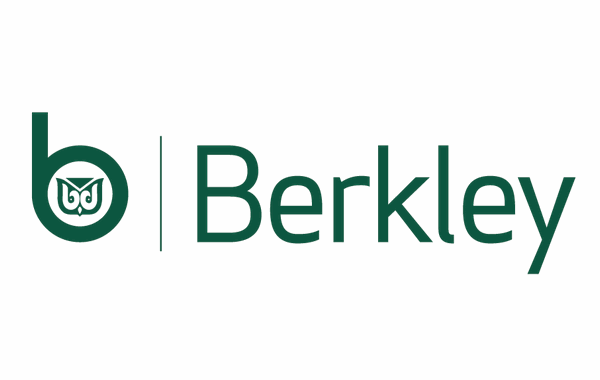W. R. Berkley ceded fewer premiums to Lifson Re sidecar through H1 2024

Over the first-half of this year, US headquartered insurance holding company W. R. Berkley Corporation ceded fewer premiums to its Lifson Re collateralized reinsurance sidecar, despite the vehicle remaining the same size in capital terms for 2024.
W. R. Berkley originally launched the Bermuda based special purpose insurer (ILS), Lifson Re Ltd., for the 2021 underwriting year, with $250 million in capital raised from third-party investors for the sidecar.
A year later, W. R. Berkley secured additional investor commitments for the Lifson Re collateralized reinsurance sidecar vehicle, growing the vehicle’s capital base to $380 million for the 2023 underwriting year.
The Lifson Re sidecar has become an increasingly important strategic vehicle for W. R. Berkley in recent years, as the company has ceded an increasing amount of premium to the sidecar structure and recognised the capital efficiencies of leaning on third-party investor funding.
Lifson Re helps W. R. Berkley lean into the opportunity presented by the hard reinsurance market cycle in recent years, especially in 2023, where the company grew in property catastrophe reinsurance and other areas of cat exposed property business.
As a result, the sidecar great with some $437 million of premiums ceded to Lifson Re by W. R. Berkley over the full-year 2023, up from $399 million of premium ceded in 2022.
As a reminder, since July 1st 2022 Lifson Re has operated with a 30% cession rate, which means the sidecar takes a significant proportion of premiums under the property and casualty reinsurance book of W. R. Berkley, across all traditional reinsurance and retrocession placements for both property and casualty business, where there is more than one open market reinsurer participating.
For 2024, the cession rate of 30% is still in-force and Lifson Re’s capitalisation remain flat, so with $380 million of equity backing from global investors, which includes Ontario Teacher’s Pension Plan and Japanese holding company MS&AD which also has a stake in the sidecar.
However, in the first-half of this year, despite the Lifson Re cession remaining static at 30%, the amount of premiums ceded to the sidecar actually fell, the first time it has been seen to do so.
Because the rule around Lifson Re cessions being a 30% share in all P&C reinsurance or retro placements where more than one open market reinsurer participates, you would think a decline in cessions to Lifson Re would coincide with a decline in premiums written by parent W. R. Berkley.
But that isn’t the case. W. R. Berkley actually underwrote 11% more in gross premiums in H1 2024 over the prior year period and the company said that fuelling this expansion was favourable market conditions “in many areas of our business.”
But in the first-half, W. R. Berkley only ceded $206 million of premiums to its Lifson Re sidecar, down from $281 million in H1 2023.
Of course, there are a number of reasons this could happen, from more deals being struck with a single open market reinsurer on them, so Lifson Re cannot access them, to a change in pattern of the underlying business written that meant Lifson Re took a little less.
Another possible explanation is the fact Lifson Re is a king of perpetual sidecar, actively taking new business each year, but due to the nature of the broad property and casualty exposures it can assume, it’s safe to presume it contains some longer-tailed business as well as short-tailed.
Because of that, some of the capital may get consumed in supporting longer-tailed risks for a time, reducing the amount of new premiums it is able to assume once it has achieved the scale its current capital-base allows.
We’ve seen this with other hybrid type sidecar structures, that take a while to ramp up but write a broad range of risk classes, where once at scale there begins a process of freeing capital as business runs-off, so the pattern of premium cessions tends to change somewhat.
With this now the fourth underwriting year for Lifson Re, it is possible the reduction in cessions assumed in the first-half this year is purely down to the fact the sidecar has reached that point of scale, in terms of premiums it can support with its capital base.
The beauty of a structure like Lifson Re is, that the sidecar will be there alongside W. R. Berkley’s balance-sheet and as the business it assumes runs-off, matures or gets commuted, it will free new capital for the next underwriting cycle to begin.
While writing a broad range of business means it will almost always have some shorter-tailed lines where capital frees every year, as well as lines that take some time to reach finality.
Lifson Re has become an increasingly important source of reinsurance capital and capacity for W. R. Berkley, sitting near the top of its reinsurers in terms of amount due to the partent.
With Lifson Re, W. R. Berkley has access to a significant pool of reinsurance capital that is likely more efficient than open-market capacity, due to the economics of the sharing of risk and fees it can earn through the performance of that business as well.
As we said before, Lifson Re is a great example for how a third-party capitalised reinsurance sidecar can become a core component of a company’s risk capital arrangements. While its aligned approach means the investors stand alongside the company’s underwriting results.
Find details of numerous reinsurance sidecar investments and transactions in our directory of collateralized reinsurance sidecars transactions.






